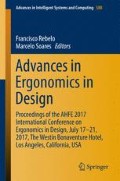Abstract
Understanding and predicting people’s displacement movement is particularly important for professionals involved in planning complex buildings (e.g., hospitals, convention centers, subway stations and university campus). An interesting approach to consider when studying human wayfinding behavior within buildings, namely considering the detection of visual stimuli, is the use of psychophysics methods. This paper aims to discuss the use of stimulus presentation comparing three methodological approaches. Three types of stimulus presentation with an increasing increment of visual information and interaction were considered: (i) constant stimuli method with fixed images, (ii) constant stimuli method with movies, and (iii) virtual reality simulation of a real environment. For this, the results of three studies were analyzed in order to verify the existence of agreement between users’ route-choices. Findings suggest, as expected, that increasing the visual information and interaction level also increase the results dispersion.
Access this chapter
Tax calculation will be finalised at checkout
Purchases are for personal use only
References
Pelli, D.G., Farell, B.: Psychophysical methods. In: Bass, M., Van Stryland, E.W., Williams, D.R., Wolfe, W.L. (eds.) Handbook of Optics, 2nd edn, pp. 29.1–29.13. McGraw-Hill, New York (1995)
Ehrenstein, W.H., Ehrenstein, A.: Psychophysical methods. In: Windhorst, U., Johansson, H. (eds.) Modern Techniques in Neuroscience Research, pp. 1211–1241. Springer, Heidelberg (1999)
Vilar, E., Teixeira, L., Rebelo, F., Noriega, P., Teles, J.: Using environmental affordances to direct people natural movement indoors. Work A J. Prev. Assess. Rehabil. 41, 1149–1156 (2012)
Vilar, E., Rebelo, F., Noriega, P., Teles, J., Mayhorn, C.: The influence of environmental features on route selection in an emergency situation. Appl. Ergon. 44(4), 618–627 (2013)
Vilar, E., Rebelo, F., Noriega, P., Duarte, E., Mayhorn, C.: Effects of competing environmental variables and signage on route-choices in simulated everyday and emergency wayfinding situations. Ergonomics 57(4), 511–524 (2014)
Whyte, J.: Virtual Reality and the Built Environment. Architectural Press, London (2002)
Aukstakalnis, S., Blatne, D.: Silicon Mirage: The Art and Science of Virtual Reality. Peachpit Press, Berkeley (1992)
Acknowledgments
Portuguese Science and Technology Foundation (FCT) grant SFRH/BPD/93993/2013.
Author information
Authors and Affiliations
Corresponding author
Editor information
Editors and Affiliations
Rights and permissions
Copyright information
© 2018 Springer International Publishing AG
About this paper
Cite this paper
Vilar, E., Rebelo, F., Noriega, P. (2018). Comparing Three Stimulus Presentation Types in a Virtual Reality Experiment to Human Wayfinding Behavior During Emergency Situation. In: Rebelo, F., Soares, M. (eds) Advances in Ergonomics in Design. AHFE 2017. Advances in Intelligent Systems and Computing, vol 588. Springer, Cham. https://doi.org/10.1007/978-3-319-60582-1_4
Download citation
DOI: https://doi.org/10.1007/978-3-319-60582-1_4
Published:
Publisher Name: Springer, Cham
Print ISBN: 978-3-319-60581-4
Online ISBN: 978-3-319-60582-1
eBook Packages: EngineeringEngineering (R0)

